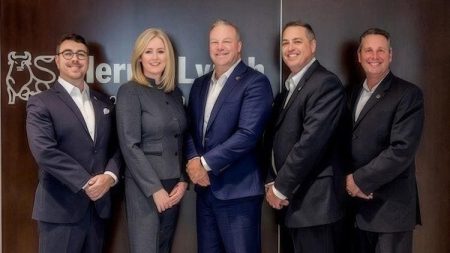I’ve been in the financial advisory business for roughly 28 years—and for 28 of those years, I’ve had a challenging relationship with the notion of “business development”—or the shadier moniker by which it is also known, “sales.”
This has been such a tenuous relationship because many of us in the industry—and all of the advisors at my firm—consider themselves high-level professionals, not salespeople. Yes, without business development, there is no business, but many, if not most, professional advisors would much prefer to do great work, have that work recognized, and have prospects lining up to request being clients.
Even most professional advisors with a great record in business development don’t love—and some hate—the act of sales, but recognize it as a necessity. This relegated the sales part of our work to a disconnected tangent—a necessary evil—rather than a fully integrated part of who we are and what we do. And that’s not because we consider ourselves above it. It’s because we are trusted fiduciaries by trade and struggle to reconcile a practice that feels inherently selfish with the seemingly loftier pursuit of helping people translate their hopes and dreams into goals and plans. And this is not just a challenge for professional financial advisors, but also for skilled professionals in many fields—accounting, consulting, law, and even medicine. Maybe you, too, have struggled with this.
BUT—what I’ve found in Mo Bunnell’s work is something truly different. He turns the gem and flips the notion of selfish sales on its head, providing an approach to “winning the work” that is no less virtuous than “doing the work,” and he does so through a lens that is just as professional as the professions that we serve, especially in his new book, Give To Grow.
One of the primary reasons Mo’s work hit me differently is certainly related to his background. He’s not a “sales guy” by trade, but instead, he was an actuary turned consultant who left that world as a senior partner to start the Bunnell Idea Group 20 years ago. Perhaps Mo is so compelling and convincing in sharing his business development expertise precisely because he doesn’t come across as a salesman.
And there are three other central reasons why Mo’s insight, shared liberally in Give To Grow, resonated with me on a deeper level:
- It’s evidence based. While much, if not most, of the sales training out there is anecdotal schtick, Mo grounds his counsel with more than 140 studies from behavioral science, finance, and economics.
- It uses genuine generosity as its key feature (with an emphasis on the word genuine). One of the many bases of research Mo draws from is Adam Grant’s work, most notably his book, Give And Take, which asserts that giving isn’t just a good act, it’s also good business.
- It prioritizes relationships over sales. In Bunnell’s world, business development is simply the professional fruit of highly personalized relationship management.
So, are you curious to know some specifics about how financial advisors can ditch the notion of sales as a have-to and transform it into a fully integrated relationship-management practice that aligns with a fiduciary ethic? I spoke with Mo Bunnell recently about his new book and how we can apply its wisdom for just that purpose. Here are three of my biggest takeaways, followed by three steps we can take to activate this approach:
3 Biggest Takeaways For Financial Advisors
First, we must fall in love with our clients’ problems.
We tend to fall in love with our financial planning solutions when we should be falling in love with our clients’ problems. “I think every vector or force within a firm is causing us to fall in love with our own solutions,” Bunnell told me. This isn’t necessarily a bad thing, as it hopefully leads us to perpetually evolve our client experience and offering, but it can lead us to adopt more of an inward, rather than an outward, focus.
Worse yet, this inward focus can become “earned dogmatism,” referencing Dr. Victor Ottati’s work, where the more expertise we gain, the more close-minded we become. In advisory work, this can manifest in prematurely assuming we understand a client’s needs based on similar past cases and rushing to solutions without truly understanding the nuance of a client’s problem.
But when we fall in love with our clients’ problems, we’ll ask more questions, leave more space for our interaction to breathe, and use the clients’ language, rather than our internal or industry jargon. And none of this is to spite our great solutions, but to more adeptly connect them with our clearer understanding of the clients’ problems.
Second, we must differentiate between “doing the work” and “winning the work.”
This is one of the biggest challenges we have as advisors. It takes so much dedication to get the education and experience needed to do the work of wealth management at a high level that we tend to presume that the same skillset used to do the work is the same required to win the work—but Bunnell suggests it’s imperative to separate the two, and to develop a skillset unique to effective business development.
For example, let’s look at how effective communication differs between the two: Once someone is a client and they are invested in the relationship, the response rate to our communication is relatively high—whereas prospective clients are much less likely to respond quickly, if at all. Detail-oriented, longer communications make sense with clients, as we summarize meetings, goals, and solutions—but Bunnell recommends limiting our email correspondence with prospects to no more than 50 words, so they don’t have to scroll in the quick glance they give our email on their phone. Similarly, with clients, we can expect to find ourselves in answer mode often, while our work with prospects is frequently driven by improving our questions.
(For more information, you can find a chart contrasting “Doing the Work” and “Winning the Work” on pages 32 and 33 of Give To Grow, or download a copy of the chart for free on givetogrow.info.”)
Third, we must be strategic with our generosity.
While Bunnell insists on genuine giving without an expectation of reciprocity, he acknowledged that we can’t give it all away and we can’t give to all. We need to be strategic with our giving, adapting our giving based on the context and the scale of the opportunity.
So, what are a few traits that make up a good gift from Bunnell’s perspective?
- Personalized and tailored – Good gifts should be relevant to the clients’ specific needs and demonstrate our understanding thereof.
- Valuable to the recipient – The gift should not be boilerplate, but instead non-trivial, practical, and useful.
- Demonstrates expertise – Our gifts should showcase our skillset and solutions (in the clients’ language) and create momentum in our growing relationship.
Examples of strategic gifts for advisors could be a touch of insightful analysis, tailored to the client’s needs; a connection to an expert who can help them solve a pressing issue; or access to resources like a relevant book, report, or guide that aligns with their current goals or challenges.
Then, armed with these novel whys and hows, what practical steps can advisors take to put this wisdom to work?
Three Steps To Activate This Wisdom
1) Develop two key lists: Relationships and Opportunities.
- Relationships – Identify 10 to 15 key individuals (who may be clients, prospects, strategic partners, or simply interesting people) who could impact your future success that you will invest in. Then, for each person, determine one specific action you can take to strengthen the relationship or provide value.
- Opportunities – Outline potential opportunities where you’d like to get a “yes.” These could be new client engagements, partnerships, speaking engagements or other opportunities where you will define a concrete next step to move closer to realizing something special and mutually beneficial.
2) Implement a weekly 15-minute business development process.
- Dedicate 15 minutes at the same time every week to review your relationship and opportunity lists.
- Choose three specific actions from your lists to focus on in the upcoming week.
- Schedule execution time to complete these actions, ensuring accountability and follow-through.
3) Actually do it.
- Another a-ha moment might feel great, but what we really need is to translate your insight into an a-ha movement—action! So, don’t skip the execution time you set aside on your calendar.
Like most of the best stuff I’ve learned through nearly three decades in financial planning and wealth management, one of the things I value the most about Give To Grow and Mo Bunnell’s wisdom is that it doesn’t just apply to our work. These are universal principles of relationship management that can make us better spouses, parents, friends, and co-workers, just as they make us better advisors.
That is a fully integrated approach to work, life, and business development that stands in stark contrast to the disconnected, uncomfortable version of transactional sales that is hard to reconcile with our roles as fiduciary financial advisors.
Read the full article here









